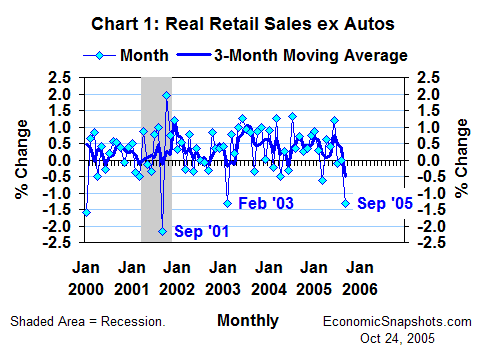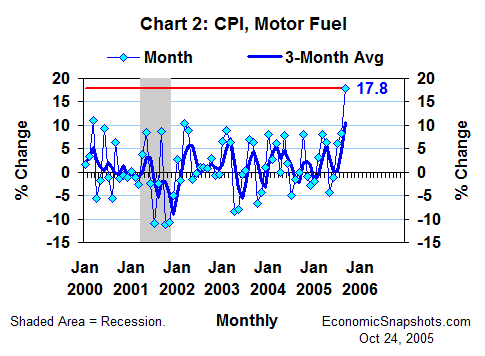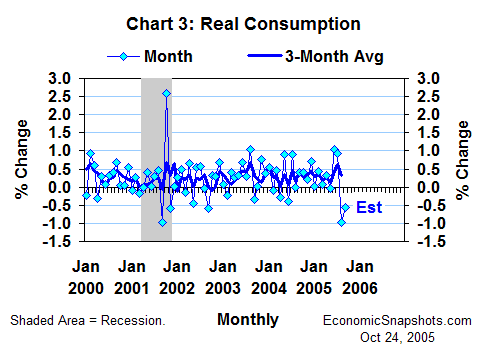
| Back to Index |
October 24, 2005 – U.S. retail sales excluding autos rose by a seemingly solid 1.1% in September, but the CPI for consumer goods shot up by 2.4%. Thus, real non-auto retail sales fell by about 1.3% in September – their steepest decline since just before the second Gulf War in February 2003 (Chart 1).

The Census Bureau said Hurricanes Katrina and Rita had mixed effects on September retail sales, depending in part on retailers’ locations. For example, some stores lost sales because of hurricane-forced closures, but other stores gained sales from purchases made by evacuees.
However, one big hurricane effect hit consumers nationwide – the leap in gasoline prices caused by the storm damage to oil rigs and refineries. The CPI for motor fuel shot up by 17.8% in September (Chart 2) – its largest increase on record. (The record for this series starts in 1967.)

Rising energy prices weaken real consumption by reducing consumers’ purchasing power. In September, it looks like the damage was confined to the energy sector. Real retail sales at gasoline stations fell by about 12% – more than accounting for the real non-auto sales decline. Excluding gasoline, September real non-auto retail sales rose by about 0.5%.
Beyond weather effects, volatility in car and light truck demand (caused by erratic price-setting behavior in the auto industry) has been whipsawing consumption growth. For example, the 19% plunge in August light vehicle sales more than accounted for that month’s steep 1% consumption decline. In September, light vehicle sales fell by 2.4%, posing a milder negative for September consumption.

Given ongoing moderate growth in consumers’ services demand, real consumption probably fell by about 0.5% in September (Chart 3) – depressed primarily by those weak real gasoline sales. That would put Q3 real consumption growth at about a 3% annual rate, compared to a 3.4% gain in Q2.
Suzanne Rizzo